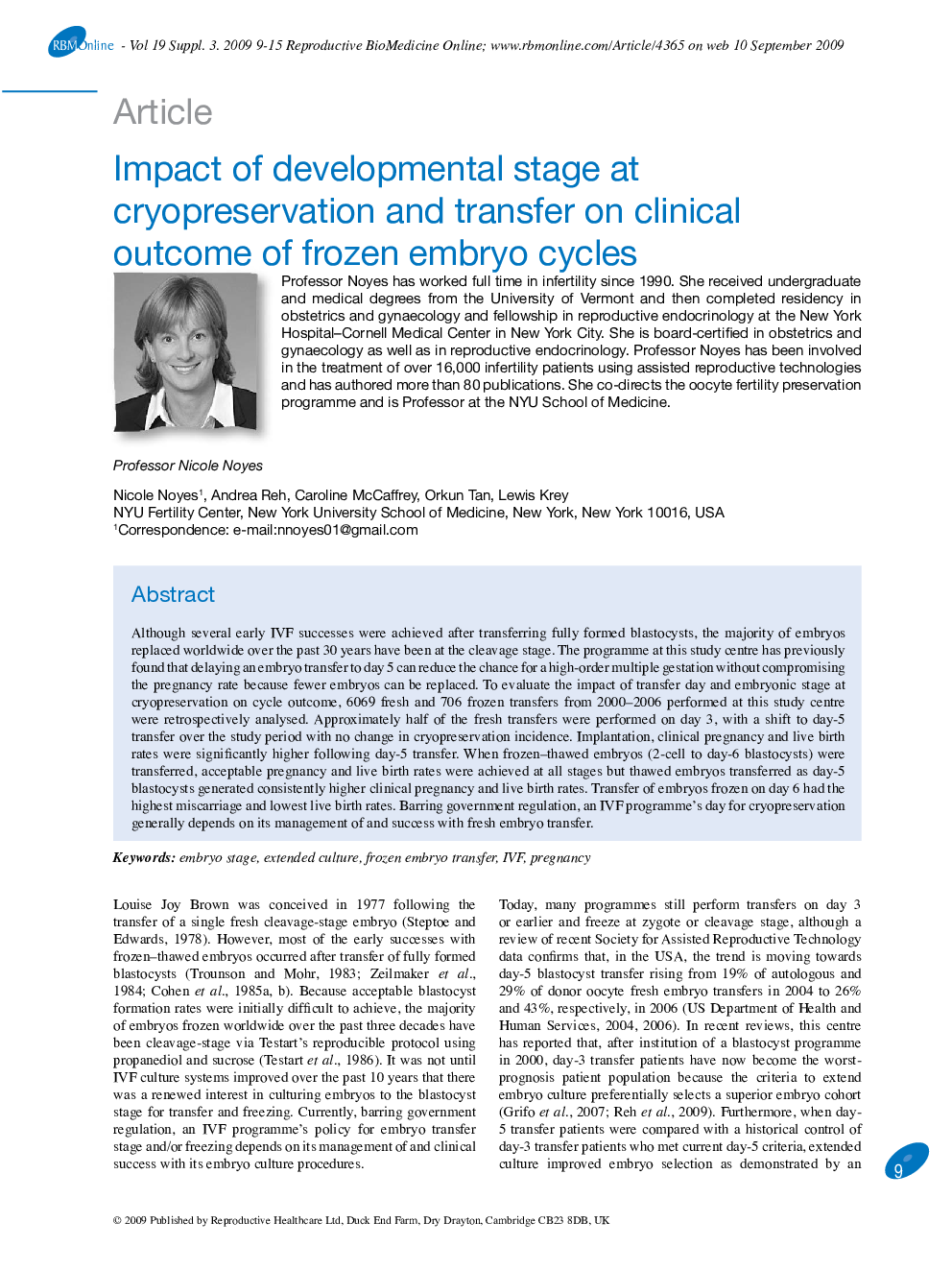| Article ID | Journal | Published Year | Pages | File Type |
|---|---|---|---|---|
| 3971140 | Reproductive BioMedicine Online | 2009 | 7 Pages |
Although several early IVF successes were achieved after transferring fully formed blastocysts, the majority of embryos replaced worldwide over the past 30 years have been at the cleavage stage. The programme at this study centre has previously found that delaying an embryo transfer to day 5 can reduce the chance for a high-order multiple gestation without compromising the pregnancy rate because fewer embryos can be replaced. To evaluate the impact of transfer day and embryonic stage at cryopreservation on cycle outcome, 6069 fresh and 706 frozen transfers from 2000–2006 performed at this study centre were retrospectively analysed. Approximately half of the fresh transfers were performed on day 3, with a shift to day-5 transfer over the study period with no change in cryopreservation incidence. Implantation, clinical pregnancy and live birth rates were significantly higher following day-5 transfer. When frozen–thawed embryos (2-cell to day-6 blastocysts) were transferred, acceptable pregnancy and live birth rates were achieved at all stages but thawed embryos transferred as day-5 blastocysts generated consistently higher clinical pregnancy and live birth rates. Transfer of embryos frozen on day 6 had the highest miscarriage and lowest live birth rates. Barring government regulation, an IVF programme's day for cryopreservation generally depends on its management of and success with fresh embryo transfer.
